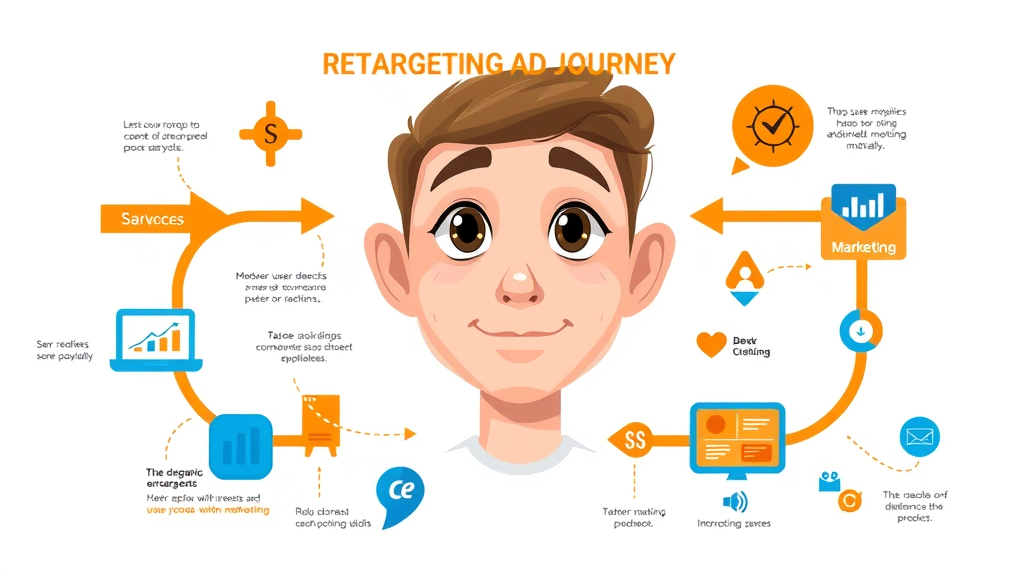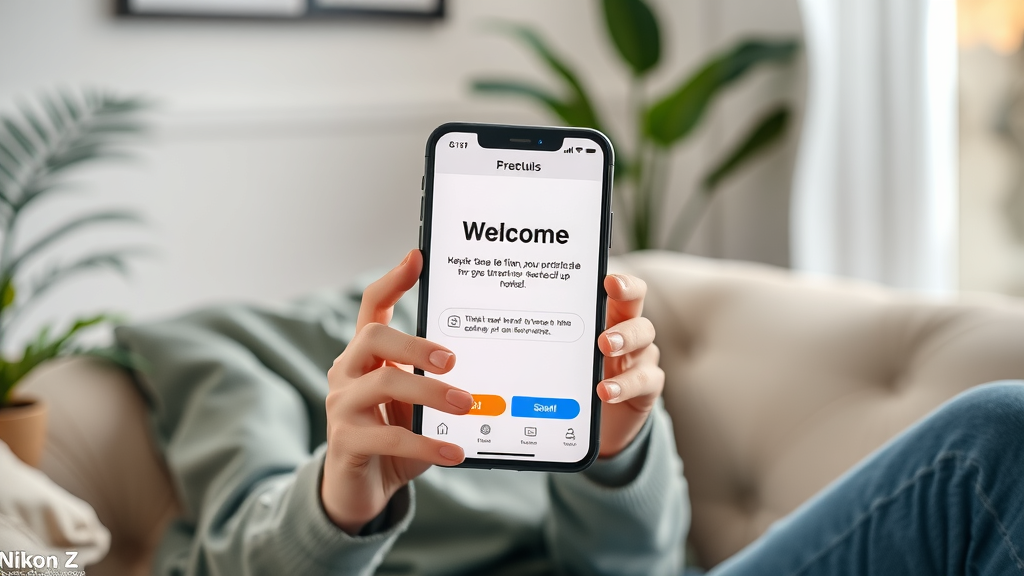Did you know over 70% of online shopping carts are abandoned—yet retargeting best practices can help recover up to 26% of these lost sales? That makes mastering retargeting not just an advantage, but a necessity for every modern business. In this comprehensive guide, you'll uncover proven strategies to optimize your retargeting ad spend, avoid the hidden pitfalls of poorly constructed campaigns, and harness dynamic ad technology for higher conversion rates. Whether you're just launching your first retargeting ad or looking to supercharge performance marketing, you'll find a step-by-step approach to building seamless, high-performing retargeting campaigns that convert.
"According to industry research, over 70% of online shopping carts are abandoned, but targeted retargeting best practices can recover up to 26% of lost sales."

Why Retargeting Best Practices Matter in a Modern Retargeting Ad
Applying retargeting best practices is crucial for maximizing your marketing campaign's ROI. As competition intensifies across channels like social media and display ad networks, every dollar matters. Inefficient retargeting ads risk wasted ad spend, ad fatigue, and even brand damage by bombarding your target audience with repetitive messaging. By adopting a strategic, step-by-step approach, you can target previous site visitors with relevance at every touchpoint, ensuring your marketing message stays top of mind without overwhelming the user.
Modern consumers expect personalization and value—and your retargeting campaigns must deliver. This means moving beyond ‘spray and pray’ tactics. Instead, you’ll need to segment your site visitors, tailor your dynamic ad content, and use data-driven metrics like click-through rate (CTR) and cost per conversion to optimize every detail. If you’re still using a single retargeting ad for everyone who’s visited your site, it’s time to rethink and realign your marketing strategy to drive conversions and repeat customers.
- Discover how retargeting best practices optimize your retargeting ad spend and ROI
- Learn to identify key mistakes in retargeting campaigns before they cost you
- Explore actionable steps to develop a high-converting retargeting strategy
- Understand the role of dynamic ad formats in personalizing your marketing campaign
Overview of Effective Retargeting Best Practices for Retargeting Ads
Defining Retargeting Ads and Their Modern Role in Marketing Campaigns
Retargeting ads are targeted digital marketing messages that reach people who previously interacted with your website, display ad, or product page. Unlike generic ads, retargeting leverages user data—such as visited your site activity, shopping cart abandonment, or browsing behavior—to deliver a highly relevant, often personalized ad creative. This keeps your brand and products top of mind for those already interested, guiding potential customers back to your landing page or product to complete their purchase journey.
In today's crowded digital marketing ecosystem, retargeting campaigns stand out as powerful tools for increasing brand awareness, conversion rate, and customer retention. By segmenting site traffic, customizing marketing messages, and integrating dynamic ad content, businesses can boost the chances of making a purchase. Retargeting is no longer just an ‘extra step’ in your marketing strategy—it's a proven method that transforms window-shoppers into repeat customers. As brands invest more in performance marketing, retargeting ads have become essential for staying competitive and maximizing ad spend.

How Retargeting Campaigns Work: A Technical Overview
At the core of every successful retargeting campaign is smart audience tracking. When a user visits your site or specific page, a small snippet of code—known as a pixel—drops a tracking cookie on their browser. This enables ad networks to recognize and later show tailored display ads or remarketing ads to that user across different channels, including social media platforms and third-party sites. The benefit? You reach people who are already primed to engage, increasing the relevance and efficiency of your marketing spend.
Modern retargeting campaigns use advanced segmentation, allowing you to tailor ads for different site visitors based on their behaviors—like viewing a product page, abandoning a cart, or spending time on a category page. With dynamic ad formats, your marketing message can automatically display products or offers each user showed interest in. Technologies such as frequency caps help avoid ad fatigue, ensuring users aren’t overexposed. By aligning your landing page content with the creative used in the retargeting ad, you can ensure a seamless user journey, which is vital for maximizing conversions and ROI.
| Retargeting Best Practice | Objective | Outcome |
|---|---|---|
| Segmentation | Target specific audience groups | Higher relevance and engagement |
| Ad creative optimization | Enhance visual and copy appeal | Better click-through rates |
| Frequency cap setting | Avoid ad fatigue | Reduced wasted spend |
| Dynamic ad usage | Personalize based on behavior | Increased conversion rates |
| Landing page alignment | Match user intent to landing | Lower bounce rates |
Common Mistakes in Retargeting Campaigns and How to Avoid Them
Many retargeting campaigns lose value—and even repel potential customers—due to avoidable missteps. One common mistake is failing to use frequency caps , which leads to ad fatigue. Bombarding a site visitor with the same ad creative causes annoyance, eroding brand awareness and wasting ad spend. Instead, establish reasonable limits to keep your display ad top of mind without overwhelming your audience.
Another frequent error is serving identical ads repeatedly, rather than refreshing dynamic ad creative to reflect user action or new offers. Ignoring site traffic segmentation means your marketing message misses the mark, speaking generically to everyone instead of personalizing based on actual behavior. If your landing page is not aligned with the retargeting ad or product page, visitors may bounce—confused by mismatched messaging or irrelevant offers. Regularly updating retargeting ad content ensures your campaigns remain engaging, boost conversion rate, and keep users moving down the funnel.
- Ignoring frequency capping and causing ad fatigue
- Serving the same ad creative multiple times
- Overlooking site traffic segmentation
- Failing to align the landing page with ad messaging
- Neglecting to update retargeting ad content regularly
The Impact of One-Size-Fits-All Retargeting Strategy on Marketing Campaigns
Adopting a single retargeting ad for all site visitors may seem efficient, but it’s a surefire way to dilute ROI. When your retargeting strategy doesn’t take audience segments and behaviors into account, your marketing message fails to resonate. Shoppers who nearly completed a purchase need a different incentive than those who bounced off a category page. Without smart segmentation and dynamic ad usage, you risk alienating potential repeat customers, driving up ad spend without measurable results.
Furthermore, a lack of personalization signals to your audience that your brand isn’t attentive to their needs or interests. In a world where digital marketing is all about relevance and timing, a generic approach can actually decrease brand loyalty and trust. To avoid these costly pitfalls, map out clear segmentation for every retargeting campaign and leverage tools that automate dynamic ad delivery based on user actions and intent.

Underestimating the Importance of Dynamic Ad Formats in Remarketing Ad Success
Dynamic ad formats are a cornerstone of high-performing retargeting campaigns. Unlike static display ads, which show the same marketing message to everyone, dynamic ads automatically populate with content or offers tailored to each user’s interests—such as recently viewed products or abandoned cart items. This personalization markedly increases engagement, click-through rates, and ultimately, sales.
Brands that neglect dynamic ad options miss out on the power to display the right product at exactly the right time, reducing the chances of lost sales. By focusing on dynamic ad creative within your retargeting ad set, and continually updating content based on real-time site traffic data, you keep your audience engaged and maximize the value of every marketing dollar.
Building a Retargeting Campaign That Converts: Step-by-Step Guide
Mapping Audience Segmentation for Targeted Retargeting Campaigns
Segmentation is at the heart of every effective retargeting campaign . Start by identifying key audience groups based on behavior: visitors who abandoned a shopping cart, browsed specific product pages, or spent significant time on your landing page without taking action. These micro-segments allow you to customize ad creative and messaging for different needs, guiding users back to where they left off and offering personalized incentives to close the sale.
Advanced segmentation might also include demographic data, engagement history, or previous purchasing activity. The more granular your audience mapping, the more precise your retargeting ad can become—ensuring every impression is highly relevant. Remember, your goal is to reach people most likely to convert, not just anyone who visited your site. Use available CRM, analytics, and ad platform tools to set up robust, flexible audience segments and meet users with a marketing message that feels individually crafted.
Crafting Compelling Ad Creative to Boost Retargeting Ad Performance
To ensure your retargeting ads drive results, invest in high-quality ad creative that stands out in a crowded digital landscape. Effective ad creative blends eye-catching visuals with concise, action-oriented marketing messages. For instance, feature product images for users who visited a specific product page, or highlight a special discount for those who left items in their cart. Strong calls-to-action ("Complete Your Order," "Limited-Time Offer") motivate users to return to your landing page and complete their journey.
Refresh your creative regularly to keep repeat customers engaged and avoid banner blindness. Employ A/B testing on different ad formats, colors, and messaging to determine what resonates best with each segment. Remember, the alignment between your ad creative and the actual offer on your landing page is critical—any disconnect may lead to lost conversions and higher bounce rates.

Setting Frequency Cap to Eliminate Ad Fatigue and Maximize ROI
One of the most underrated retargeting best practices is setting an appropriate frequency cap for your retargeting ads. Frequency caps control how often the same user sees your ad within a given period. Without these settings, users may be inundated by the same display ad, which leads to annoyance, ad fatigue, and diminishing returns. A good rule of thumb is to show your ad 3-7 times per week to each user, but this can vary based on your campaign's length and product cycle.
Evaluate engagement and conversion data regularly: if users aren’t responding after several exposures, reduce frequency or rotate ad creative. Smart frequency capping ensures your message stays visible without becoming intrusive, maintaining a positive brand experience and optimizing your ad spend for higher returns.
Leveraging Dynamic Ad Technology in Retargeting Strategy
Dynamic ad technology transforms generic marketing into highly personalized advertising. By integrating data feeds and behavioral triggers, dynamic ads can showcase specific items users viewed, left in their cart, or interacted with during previous sessions. This hyper-relevant approach keeps your marketing message accurate and enticing, increasing the likelihood of making a purchase on their return visit.
For best results, couple dynamic ad use with robust analytics to monitor performance and adjust your creative or offer in real-time. Dynamic ad formats also facilitate automated updates for prices, inventory, or seasonal promotions. As part of your retargeting strategy, embrace automation and personalization to drive higher engagement and boost your overall conversion rate.
Optimizing the Landing Page for a Seamless User Journey
A well-optimized landing page is the final piece of the retargeting puzzle. Ensure that your landing page aligns with the marketing message and offer presented in your retargeting ad. Any disconnect can disrupt the conversion journey, leading to increased bounce rates and frustrated visitors. Use clear copy, bold CTA buttons, and visuals that reinforce the product or value promised in your ad creative.
Mobile responsiveness, fast load times, and trust signals (like testimonials or secure payment icons) are essential for capturing conversions. Regularly A/B test different landing page elements to see what maximizes engagement and sales. Your goal is to create a seamless, intuitive experience that removes friction and gives site visitors confidence to complete the desired action—be it a purchase, sign-up, or download.

Measuring Success: KPIs for Retargeting Best Practices in Retargeting Campaigns
Key Metrics: Click-Through Rate, Conversion Rate, Cost per Conversion
Tracking the right KPIs ensures your retargeting campaigns operate at peak performance. The main metrics to monitor include:
- Click-Through Rate (CTR): Measures how often users who view your retargeting ad actually click on it. A healthy CTR indicates compelling creative and messaging.
- Conversion Rate: Shows how many ad clicks lead to actual conversions—such as purchases or sign-ups. The higher the conversion rate, the more relevant your ad and landing page pair are to your audience.
- Cost per Conversion (CPC): Reveals the average spend required to secure a conversion. Lower CPC values signify an efficient and effective retargeting strategy.

Analyzing Return on Investment for Retargeting Ads
Calculating ROI is essential for every marketing campaign. For retargeting ads, ROI measures the profit generated compared to your total ad spend. If your campaigns are running efficiently, ROI should increase as you refine segmentation, frequency capping, ad creative, and landing page alignment. Consider also tracking the lifetime value of customers acquired through retargeting campaigns, as these often result in higher loyalty and future purchases.
Use advertising dashboards and analytics tools to assess which segments and creative combinations yield the highest ROI. If a segment is underperforming, re-allocate budget to higher-converting groups or test new dynamic ad elements. Continual optimization is key to extracting the most value from your performance marketing initiatives.
Leveraging Site Traffic Insights for Retargeting Campaign Optimization
Site traffic analytics offer invaluable insights for refining your retargeting strategy. By reviewing which pages are most visited, which stages users abandon the funnel, and which devices are commonly used, you can better tailor both your retargeting ad and landing page. Root your segmentation and dynamic ad content in this data—ensuring every remarketing ad resonates with user intent and context.
Regularly assess conversion performance by traffic source, creative variation, and audience segment. Use this continuous feedback loop to refresh ad creative, adjust frequency caps, and align offers or messaging with the real needs of your site visitors. Over time, your retargeting campaigns will deliver more targeted results and a substantially improved ROI.
| Metric | Description | Ideal Range |
|---|---|---|
| CTR | Clicks on ad divided by impressions | 0.5-2% |
| Conversion Rate | Completed actions per ad click | 2-10% |
| CPC | Average cost per ad click | $0.50–$2.50 |
| ROI | Profit compared to spend | 300–600% |
Advanced Retargeting Best Practices for High-Performing Retargeting Ads
Integrating Retargeting Campaigns with Overall Marketing Strategy
Retargeting does not work in isolation. Integrate your retargeting campaigns with other facets of your marketing strategy for holistic impact. Consistent branding, messaging, and audience targeting across display ads, social media, and email nurture sequences lead to higher brand awareness and conversion rates. Sync creative assets and offers so every touchpoint reinforces the same value proposition, regardless of channel or device.
Cross-functional collaboration among creative, data, and sales teams leads to smarter, more adaptive retargeting ads. Prioritize transparent sharing of KPIs, insights, and learnings so every stakeholder can contribute to ongoing optimization. The seamless integration of retargeting into your broader performance marketing plan maximizes both reach and return on investment.

Personalization and AI in Dynamic Ad Delivery
Artificial intelligence (AI) tools empower marketers to take retargeting best practices up a notch through predictive analytics and hyper-personalized dynamic ad delivery. AI models can analyze behavioral data to forecast which products and messages will resonate most with individual users, then automatically curate and launch ads accordingly. This reduces manual workload and increases the relevance of every display ad or remarketing ad shown.
Personalization goes beyond inserting a user’s name; it’s about dynamically adapting the entire ad experience—including visuals, copy, offers, and landing page links—to match each user’s unique journey. Routinely use A/B testing on different AI-generated dynamic ad formats and align segmentation rules with real-time user engagement metrics for optimal performance marketing outcomes.
- Utilize dynamic ad creative for product upsell
- Implement cross-platform retargeting ads
- A/B test ad formats and landing pages regularly
- Adjust frequency cap based on user behavior data
People Also Ask
What is a retargeting campaign and how does it work?
A retargeting campaign is a digital marketing strategy focused on showing targeted ads to users who have previously visited your site but didn’t complete a desired action, such as making a purchase. By placing tracking pixels on your website, you can follow these users across channels like social media and display ad networks, serving relevant ads to remind them of your product or offer. The goal is to increase conversions by bringing interested site visitors back to your landing page where they’re more likely to buy or sign up.
What are the essential steps to optimize retargeting ads?
To optimize retargeting ads, start by segmenting your site visitors based on their behavior, such as viewing a product page or abandoning a cart. Next, use dynamic ad creative to personalize each retargeting ad for different audience segments, ensuring the offer matches their interests. Set frequency caps to prevent ad fatigue, continually test different ad formats and messaging, and align your landing page with the ad’s promise for a seamless conversion experience.

How do frequency caps enhance retargeting best practices?
Frequency caps prevent users from seeing the same retargeting ad too often, reducing the risk of ad fatigue or annoyance. By limiting exposures, you ensure your marketing message stays fresh and effective, leading to higher engagement and better conversion rates. Smart frequency capping also helps manage ad spend and maintains a positive brand perception among your target audience.
Why are dynamic ad formats important in a retargeting strategy?
Dynamic ad formats allow you to personalize ads based on each user’s behavior and interests, displaying products or offers they’ve previously engaged with. This increases the relevancy of the remarketing ad, boosts click-through and conversion rates, and maximizes the ROI of your retargeting campaigns. Dynamic ads also make it easier to update promotions and inventory in real time, keeping your marketing campaign agile and effective.
What should I avoid in my retargeting ad creative?
Avoid using generic or outdated creative, repetitive messaging, or mismatched calls-to-action that don’t align with your landing page or offer. Static creatives that ignore user behavior or segment interests can lead to banner blindness and lower conversion rates. Instead, update your ad creative regularly, personalize content, and test variations to ensure your retargeting ads remain engaging and effective.
Expert Insights: Quotes on Retargeting Best Practices from Industry Leaders
"Effective retargeting best practices are about precision, not just repetition." – Digital Marketing Thought Leader
"Smart segmentation is key to developing retargeting campaigns that don’t annoy, but convert." – SaaS Marketing Executive
Frequently Asked Questions About Retargeting Best Practices
How often should I refresh my retargeting ad creative?
Ad creative should be updated at least every 4–6 weeks, or sooner if you notice a drop in engagement or conversion rates. Regularly refreshing your retargeting ad ensures that your marketing message stays relevant and avoids ad fatigue among repeat customers.
Are retargeting campaigns suitable for small businesses?
Absolutely. Retargeting campaigns are highly scalable and can be tailored to your budget and goals. Small businesses can benefit from retargeting by focusing on specific audience segments and maximizing ROI through personalized dynamic ad formats and smart frequency capping.
What are common reasons retargeting campaigns fail?
Retargeting campaigns often fail due to lack of proper audience segmentation, using the same ad creative for all segments, setting no frequency caps, and not aligning ads with the landing page offer. Neglecting performance metrics and failing to regularly optimize also contribute to poor campaign results.
Key Takeaways for Implementing Retargeting Best Practices Across Retargeting Ads
- Prioritize segmentation and personalization in every retargeting campaign
- Continuously test and optimize both dynamic ad formats and landing page relevance
- Use frequency caps to maintain ad visibility without fatigue
- Monitor key KPIs to ensure your retargeting ad delivers positive ROI
Ready to Boost Your Results with Retargeting Best Practices?
- Apply these retargeting best practices to your next marketing campaign for superior results.
- For tailored support or to launch high-converting retargeting ads, call us at (385) 469-1869 or email at info@solu4u.com today!
Sources
- https://www.wordstream.com/retargeting-ads
- https://www.hubspot.com/marketing-statistics
- https://www.adroll.com/blog/marketing/the-beginners-guide-to-retargeting
- https://www.clevertap.com/blog/retargeting-best-practices/
To enhance your understanding of retargeting best practices and avoid costly advertising mistakes, consider exploring the following resources:
-
“8 Essential Best Practices for Retargeting Ads and Mistakes to Avoid” : This article provides a comprehensive guide on optimizing retargeting campaigns, covering topics such as leveraging social media and email, simplifying ad messaging, and maintaining brand consistency. ( panoramata.co )
-
“Retargeting Ads: 7 Best Practices to Supercharge Performance” : This resource offers insights into effective retargeting strategies, including testing different ad sizes, segmenting audiences, and monitoring ad impressions to prevent fatigue. ( megalytic.com )
By delving into these articles, you’ll gain actionable strategies to refine your retargeting efforts, enhance ad performance, and maximize your return on investment.
 Add Row
Add Row  Add
Add 




Write A Comment